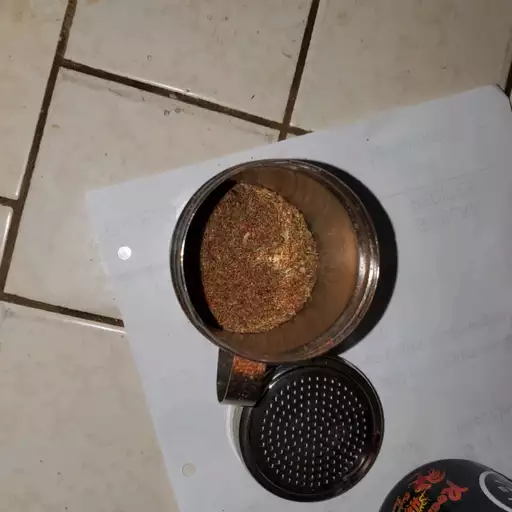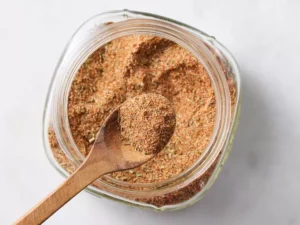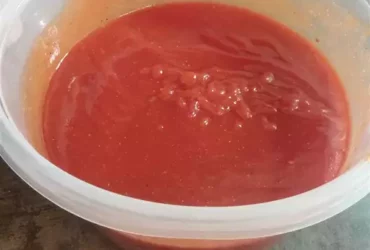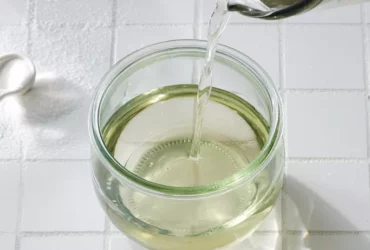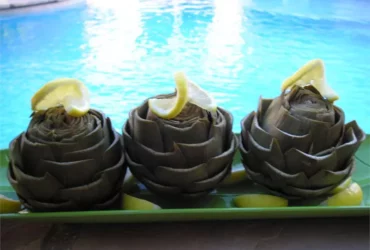Ingredients
Cajun staple spices
Cajun cuisine is known for its bold and aromatic flavors, which are often achieved through the use of a blend of spices that add depth and heat to dishes. At the heart of many Cajun staple spice blends is a combination of ingredients that may include:
- Paprika: This sweet and smoky spice is a fundamental component of many Cajun seasoning mixes, adding a rich, earthy flavor to dishes.
- Garlic powder: Dehydrated garlic is commonly used in Cajun cooking to add a savory depth of flavor to dishes.
- Onion powder: Like garlic powder, onion powder adds a sweet and savory flavor to dishes, making it a staple in many Cajun spice blends.
- Cayenne pepper or red pepper: This spicy ingredient is often used in small amounts to add heat to Cajun dishes without overpowering the other flavors.
- Thyme: Fresh or dried thyme adds a slightly minty flavor that pairs well with the bold spices commonly found in Cajun cooking.
- Oregano: Pungent and earthy, oregano is another herb commonly used in Cajun seasoning blends to add depth of flavor.
- Black pepper: Freshly ground black pepper adds a sharp, slightly bitter flavor that helps to balance out the sweetness of other spices in the blend.
- Salt: Like black pepper, salt enhances flavors and acts as a preservative in many Cajun dishes.
Some people also like to add a pinch of cumin or coriander powder to their Cajun seasoning mixes for extra depth and warmth. When using these spices, it’s essential to remember that less is often more – start with a small amount and adjust to taste, as the flavor can quickly become overpowering.
Keep in mind that traditional Cajun spice blends may vary depending on personal preferences or regional traditions. Feel free to experiment and customize your seasoning mix to suit your taste buds!
For those looking to create their own Blackened Seasoning Mix Recipe, a general guideline for proportions is as follows:
- Paprika (about 20% of the blend)
- Garlic powder and onion powder (each about 10%)
- Cayenne pepper or red pepper (about 5-10%)
- Thyme, oregano, black pepper, and salt (each about 2.5-5%)
Remember that these proportions are just a starting point – adjust them to taste, and don’t be afraid to experiment with different combinations of spices to create your own unique flavor profile.
Paprika
Paprika is a sweet and smoky spice commonly used to add flavor and color to various dishes, including the popular Blackened Seasoning Mix.
The word “paprika” originates from the Hungarian word for sweet pepper, and it’s derived from the Latin word “piper,” meaning pepper.
Paprika is made from dried and ground sweet peppers or bell peppers, which are rich in antioxidants, vitamins A and C, and beta-carotene.
There are several types of paprika, including:
- Sweet paprika: This is the most commonly used type and has a mild, sweet flavor. It’s often used to add color and flavor to dishes like deviled eggs, deviled potatoes, and cheese sauces.
- Smoked paprika: This type has a smoky, savory flavor and is often used in barbecue recipes, paella, and chili con carne.
- Hot paprika: This type has a spicy kick and is often used to add heat to dishes like stews, soups, and casseroles.
- Hungarian paprika: This type has a slightly sweet and smoky flavor and is often used in traditional Hungarian dishes like goulash and chicken paprikás.
In the context of the Blackened Seasoning Mix recipe, smoked or hot paprika can be used to add depth and heat to the blend.
Paprika pairs well with a variety of spices and herbs, including garlic powder, onion powder, thyme, oregano, cayenne pepper, black pepper, salt, and other ingredients commonly found in seasoning blends.
Garlic powder
Garlic powder is one of the key ingredients in a blackened seasoning mix recipe, adding depth and richness to the dish without the pungency of fresh garlic. It’s often used in conjunction with onion powder, paprika, and other spices to create a bold and aromatic flavor profile.
There are different types of garlic powder available, including plain, smoked, and roasted varieties. The choice between these options will depend on the specific taste you’re aiming for in your blackened seasoning mix recipe. For example:
- Plain garlic powder provides a neutral, slightly sweet flavor that complements other spices well.
- Smoked garlic powder adds a smoky, savory element to the mix, which pairs particularly well with bold or spicy flavors.
- Roasted garlic powder has a deeper, nuttier flavor than plain garlic powder and can add a complex, earthy note to your seasoning mix.
When using garlic powder in a blackened seasoning mix recipe, it’s essential to balance the amount of each ingredient according to your taste. A general rule of thumb is to start with small amounts and adjust as needed, as the flavor can quickly become overpowering.
The ratio of garlic powder to other spices will depend on the specific flavor profile you’re aiming for in your blackened seasoning mix recipe. For example:
- For a classic Cajun-style blackening seasoning mix, use 20-25% garlic powder and balance with paprika, onion powder, thyme, oregano, cayenne pepper, and other spices.
- For a smokier or more robust flavor profile, increase the proportion of garlic powder to 30-40% or more, depending on your taste preferences.
Remember that the key to creating an excellent blackened seasoning mix recipe is balance and experimentation. Don’t be afraid to adjust ratios, try new ingredients, and fine-tune flavors until you achieve the perfect blend for your needs.
Onion powder
Onion powder is one of the key ingredients used in traditional blackened seasoning mixes. It adds a deep, savory flavor and a hint of sweetness to the dish.
The onion powder commonly used in blackened seasoning blends is typically made from dehydrated onions that have been ground into a fine powder. The onions are usually yellow or white in color and are chosen for their mild, sweet flavor.
To make a flavorful onion powder, onions are often smoked or caramelized to enhance their natural sweetness before they are dried and powdered. This process concentrates the flavors of the onions, resulting in a rich, intense powder that is perfect for adding depth and complexity to blackened dishes.
When used in blackening seasonings, onion powder helps to balance out the bold, spicy flavors of other ingredients like paprika, garlic powder, and cayenne pepper. It adds a subtle, aromatic flavor that complements the other spices without overpowering them.
The key is to use high-quality onion powder that has been made from fresh, flavorful onions. Look for onion powder that has been made from sweet, yellow onions or Vidalia onions for the best flavor.
You can find onion powder in most spice aisles of well-stocked grocery stores. It’s usually sold in small bottles or containers and is often packaged with other spices like garlic powder and paprika.
A pinch of heat
The art of cooking lies not only in the techniques employed but also in the careful selection and combination of ingredients, which can make or break a dish. When it comes to creating a Blackened Seasoning Mix, the choice of ingredients plays a crucial role in achieving that distinctive dark color and bold flavor.
A good Blackened Seasoning Mix should include a blend of spices, herbs, and other seasonings that will not only add depth but also heat to your dish. One key ingredient is paprika, which provides a rich, smoky flavor and a deep red color to the seasoning mix.
Another essential component is garlic powder, which adds a pungency that complements the bold flavors of the other ingredients. Onions powder also contributes to the depth of flavor in the blend, while cayenne pepper or red pepper flakes add the much-needed pinch of heat.
Cumin and thyme are often included in Blackened Seasoning Mixes as they enhance the overall flavor profile with their earthy undertones. Oregano adds a slightly bitter note that balances out the other flavors, while black pepper provides a sharpness that cuts through the richness.
Some recipes may also include additional ingredients such as coriander, mustard powder, or dried herbs like parsley or rosemary to create a more complex and nuanced flavor profile. However, when working with these additional ingredients, it’s essential to balance their flavors carefully so as not to overpower the other components of the blend.
The key to creating an effective Blackened Seasoning Mix is achieving the right balance between the different ingredients. A good starting point is to use a ratio of 2/3 spices and herbs to 1/3 heat-producing ingredients, allowing you to adjust to your taste as needed.
Remember that the beauty of a seasoning blend lies in its versatility – feel free to experiment with different proportions of ingredients or add personal touches like smoked paprika or chili powder to create unique variations of this classic Blackened Seasoning Mix.
Cayenne pepper
- Cayenne pepper is a key ingredient in many spice blends, including our Blackened Seasoning Mix recipe.
- Cayenne pepper is derived from the fruit of the Capsicum annuum plant, which is native to Central and South America.
- The peppers are harvested when mature and ripe, then dried to preserve them for later use.
- The dried peppers are processed into a fine powder, known as cayenne pepper or red pepper.
- Cayenne pepper contains capsaicin, the compound responsible for its distinctive heat and flavor.
- Capsaicin is a potent stimulant that can cause blood vessels to dilate, leading to increased heart rate and other physiological responses.
- Despite its intense heat, cayenne pepper also has a rich, slightly sweet flavor that complements many dishes.
- In our Blackened Seasoning Mix recipe, we use cayenne pepper in combination with other spices and herbs to create a bold, savory flavor profile.
- Cayenne pepper is often used in small quantities due to its intense heat, but it’s an essential ingredient for adding depth and complexity to many dishes.
- Some common uses for cayenne pepper include adding heat to sauces and marinades, seasoning meats and vegetables, and enhancing the flavor of soups and stews.
Benefits and Precautions
Cayenne pepper has several benefits when used in moderation:
- Cayenne pepper can help improve circulation and relieve pain by stimulating the release of certain chemicals in the body.
- Cayenne pepper may also have anti-inflammatory properties, which could help reduce inflammation and improve overall health.
However, cayenne pepper should be used with caution:
- Cayenne pepper can cause irritation and burning in some individuals, especially those who are sensitive to capsaicin.
- Cayenne pepper may interact with certain medications, such as blood thinners and blood pressure medications.
It’s essential to use cayenne pepper in moderation and follow proper safety precautions when handling it to avoid any adverse effects.
Black pepper
Black pepper is one of the essential ingredients in blackened seasoning mix recipes, which typically involve a combination of spices and herbs to create a bold, savory flavor profile.
In its most basic form, black pepper is simply the dried and processed fruit of the Piper nigrum plant, which is native to India and Southeast Asia.
However, the production process for commercial black pepper involves several steps that can affect its quality and flavor.
The peppercorns are usually harvested when they’re mature but still green, then left to dry in the sun or through a machine-drying process.
During drying, the peppercorns develop their characteristic flavor and aroma compounds, which include oils like limonene and pinene, as well as chemical components like piperine.
Piperine is particularly notable for its ability to enhance the bioavailability of certain nutrients and spices in recipes, including curcumin from turmeric and capsaicin from chili peppers.
When using black pepper in a blackened seasoning mix recipe, it’s often combined with other ingredients like paprika, garlic powder, onion powder, and cayenne pepper to create a complex flavor profile that’s both spicy and aromatic.
The ratio of black pepper to these other spices can vary depending on personal taste preferences, but as a general rule of thumb, black pepper should make up about 20-30% of the overall seasoning blend.
This ensures that the bold, pungent flavor of the black pepper is balanced by the milder flavors of the other ingredients, creating a harmonious and savory flavor experience for cooks and diners alike.
In addition to its role in blackened seasoning mix recipes, black pepper also has numerous culinary uses beyond spice blends.
For example, it’s often used as a finishing spice to add a burst of flavor to dishes like soups, stews, and braises just before serving.
Black pepper is also a key ingredient in various types of sauces and marinades, including peppercorn sauce for steaks and peppermint sauce for lamb and pork.
As a versatile spice with a rich history and flavor profile, black pepper continues to play an essential role in cuisines around the world – from classic dishes like beef Wellington and chili con carne to innovative creations that blend international flavors and techniques.
Flavor enhancers
In the realm of culinary arts, flavor enhancers play a crucial role in elevating the taste and aroma of dishes. When it comes to creating a Blackened Seasoning Mix recipe, selecting the right ingredients and flavor enhancers is essential to achieve that distinctive dark color and bold flavor profile.
Here are some key ingredients and flavor enhancers commonly used in Blackened Seasoning Mix recipes:
- Cayenne Pepper or Red Pepper Flakes: These add a spicy kick and contribute to the blackening effect. Use them sparingly, as they can be quite potent.
- Smoked Paprika: This gives the seasoning mix its characteristic smoky flavor and dark color.
- Oregano and Thyme: These herbs add depth and warmth to the blend. Fresh or dried oregano and thyme work well, depending on your preference.
- Garlic Powder and Onion Powder: These enhance the overall flavor profile of the seasoning mix, adding a savory and slightly sweet note.
- Cumin and Coriander: Ground cumin and coriander add warmth and earthiness to the blend. Use them in moderation to avoid overpowering the other flavors.
Additionally, you can consider adding other ingredients to enhance the flavor and texture of your Blackened Seasoning Mix:
- Salt: Use a high-quality salt like sea salt or Himalayan pink salt to add depth and a touch of crunch.
- Black Pepper: Freshly ground black pepper can enhance the overall flavor profile and texture of the seasoning mix.
- Spicy Brown Mustard: This adds a tangy, slightly spicy flavor that complements the smoky and savory notes in the blend.
- Powdered Dried Herbs like Parsley or Basil: These add freshness and depth to the seasoning mix. Use them sparingly, as they can be quite potent.
Remember that the key to a great Blackened Seasoning Mix is balance. Experiment with different combinations of ingredients and flavor enhancers to find the perfect blend for your taste buds.
Dried thyme
Dried thyme is a staple ingredient in many culinary traditions and is an essential component of the Blackened Seasoning Mix recipe.
Here are some key characteristics of dried thyme:
- Sources: Dried thyme can be sourced from various regions, including France, England, and the Mediterranean. The quality and flavor profile may vary depending on the region.
- Aroma: Dried thyme has a distinct pungent aroma that is often associated with herbal remedies and medicinal uses. However, in cooking, its milder and slightly minty flavor takes center stage.
- Flavor: Dried thyme contributes a savory, slightly earthy, and herbaceous taste to dishes, which complements the bold flavors of the Blackened Seasoning Mix recipe.
- Taste profile: When used in small quantities, dried thyme adds depth and complexity to recipes. It is particularly effective at enhancing the flavor of meats, vegetables, and soups.
- Storage and handling: Dried thyme should be stored in an airtight container to preserve its potency and aroma. When using it, make sure to crush or grind it into smaller pieces to release its oils and flavors.
In the Blackened Seasoning Mix recipe, dried thyme is often combined with other herbs like paprika, garlic powder, onion powder, cayenne pepper, salt, black pepper, oregano, and cumin to create a complex and aromatic blend.
Oregano
Oregano is a key ingredient in many Mediterranean and Italian recipes, particularly those that require a savory flavor with a slightly bitter note.
Also known as Wild Marjoram or just oregano, it has been used for centuries to add depth and complexity to various dishes.
Types of Oregano
- Greek Oregano: Known for its pungent, earthy flavor and aroma, this is the most commonly used type in cooking.
- Turkish Oregano: Has a milder flavor with notes of mint and anise, often used in combination with other herbs like thyme and rosemary.
- Italian Oregano: A cross between Greek and sweet basil oregano, offering a balanced, slightly sweet taste.
When selecting fresh or dried oregano for the Blackened Seasoning Mix Recipe, choose high-quality ingredients with intense aroma and flavor.
Using Oregano in Cooking
- Combine oregano with garlic, thyme, and rosemary to create a robust seasoning blend for meats like lamb or beef.
- Mix oregano with lemon juice, olive oil, and herbs like parsley or basil for a refreshing salad dressing.
- Add dried or fresh oregano to soups, stews, or braises for added depth and warmth.
Remember that oregano pairs well with many ingredients, so don’t be afraid to experiment and find your own unique combinations.
Instructions
Mix the spices together
To create an authentic blackened seasoning mix, you will need to combine a blend of herbs and spices that add depth and warmth to various dishes. The classic recipe for this seasoning mix involves mixing together several key ingredients that are characteristic of Cajun cuisine.
Begin by combining 2 tablespoons of paprika, which provides a smoky flavor and helps to create the distinctive blackened color associated with this seasoning mix. You will also need 1 tablespoon of garlic powder, which adds a savory depth to your dishes, as well as 1 tablespoon of onion powder that contributes a slightly sweet undertone.
In addition to these powdered ingredients, you can add some dried herbs like oregano, thyme, and cayenne pepper to give your blackened seasoning mix an extra kick. Start by adding about half a teaspoon each of dried oregano and thyme leaves, which will infuse your dishes with a hint of earthy flavor.
Next, add a small amount of cayenne pepper – you can start with one-eighth of a teaspoon or more if you prefer a spicier mix. This will not only add heat to your dish but also help to balance out the other flavors in the seasoning blend.
The final component of this classic blackened seasoning recipe is salt and black pepper, which are essential for bringing all the ingredients together in harmony. Add about half a teaspoon each of finely ground black pepper and table salt to round out the flavor profile of your mix.
Now that you have gathered all your ingredients, it’s time to mix them together in a bowl until well combined. Start by adding the paprika, garlic powder, onion powder, oregano, thyme, cayenne pepper, and black pepper to a small bowl or container with a lid.
Next, add the salt to your mixture and stir it gently until all the ingredients are evenly incorporated into one another. Be careful not to overmix the spices at this stage, as this can cause them to become unevenly distributed in your finished seasoning mix.
Once you have combined the spices together, store your homemade blackened seasoning mix in an airtight container for up to 6 months or more. You can then use it to add depth and flavor to various dishes like redfish, shrimp, chicken, or vegetables – simply sprinkle the seasoning over the food before cooking and enjoy.
Combine the dry ingredients in a small bowl.
In preparing a Blackened Seasoning Mix, it’s crucial to start with dry ingredients. Combine them in a small bowl to ensure they’re evenly mixed and ready for use.
When combining dry ingredients, consider the essential components of the Blackened Seasoning Mix. These typically include paprika, garlic powder, onion powder, cayenne pepper or red pepper flakes, salt, and thyme. The key is to blend them harmoniously.
To combine these dry ingredients effectively, use a small bowl and whisk or spoon to mix them together. This will prevent lumps from forming and ensure the flavors are well-balanced.
It’s essential to note that when combining dry ingredients, it’s not just about mixing them; it’s also about achieving the right proportions. Adjust the quantities of each ingredient according to your preference for flavor intensity.
Once the dry ingredients are combined, you can proceed with adding any wet ingredients, such as oil or lemon juice, to create a paste or rub. This step is crucial in preparing the Blackened Seasoning Mix for use on meats like chicken, fish, or red meat.
Whisk until well combined.
In cooking, instructions are a series of steps or directions provided to achieve a specific outcome. They are essential for ensuring that a recipe is prepared correctly and safely.
For the Blackened Seasoning Mix Recipe, the instructions will guide you through the process of creating a flavorful blend of spices that can be used to blacken meats and vegetables. The key to this seasoning mix is in the blending of its individual ingredients, which includes paprika, garlic powder, onion powder, cayenne pepper, salt, thyme, oregano, and black pepper.
To ensure that your Blackened Seasoning Mix is well combined, it’s essential to whisk the ingredients until they form a uniform blend. This involves using a whisk or a spoon to mix the spices together until no lumps are visible and the mixture is evenly colored.
Whisking, in this context, is an important step that requires some effort and patience. You’ll need to hold the bowl firmly in place with one hand while using your other hand to whisk the ingredients vigorously until they’re well combined. Be careful not to over-whisk, as this can lead to a loss of texture and aroma.
By following these instructions carefully and taking the time to whisk your Blackened Seasoning Mix until it’s well combined, you’ll be able to create a delicious and authentic Cajun seasoning blend that can add flavor to a variety of dishes. So don’t rush through this step – take your time and make sure that every ingredient is evenly distributed throughout the mixture.
Remember, practice makes perfect, so feel free to experiment with different ratios of spices and ingredients to create unique variations of your Blackened Seasoning Mix. With a little patience and experimentation, you’ll be able to master this recipe and use it to add flavor and excitement to all your favorite dishes.
Usage and Tips
Season to taste
The phrase ‘season to taste’ is a common instruction used in recipes, particularly when it comes to cooking with spices and seasonings. When a recipe includes this phrase, it means that you should add the ingredients to your dish until they reach the level of flavor that you prefer.
For example, if a recipe calls for salt ‘to taste’, it’s telling you to sprinkle some salt into your food, but not to add an exact amount. Instead, you should keep adding small amounts of salt until your food tastes just right to you.
Now, let’s talk about the Blackened Seasoning Mix Recipe. This recipe is perfect for those who love spicy and savory flavors. It’s a blend of herbs and spices that can be used to add flavor to any dish, especially meats.
The Blackened Seasoning Mix Recipe includes ingredients such as paprika, garlic powder, onion powder, cayenne pepper, thyme, oregano, basil, and salt. These ingredients work together to create a unique and delicious flavor that’s sure to please even the pickiest eaters.
Here are some tips for using this seasoning mix:
- Use it on meats such as chicken, fish, beef, or pork. Simply sprinkle the seasoning mix onto the meat before cooking, and you’ll be amazed at how delicious it tastes.
- Add it to vegetables for a burst of flavor. Try sprinkling the seasoning mix onto broccoli, cauliflower, or bell peppers for a tasty side dish.
- Use it as a rub on seafood such as shrimp or scallops. The blackened seasoning mix pairs perfectly with the sweetness of seafood.
- Make it ahead and store it in an airtight container for up to 6 months. This is perfect for meal prepping or for those who like to have a stash of seasonings on hand.
Some other tips to keep in mind when using the Blackened Seasoning Mix Recipe:
- Adjust the level of heat to your liking by adding more or less cayenne pepper. If you prefer a milder flavor, start with a small amount and add more to taste.
- Don’t be afraid to get creative and add other ingredients to the seasoning mix. Try adding some chopped fresh herbs such as parsley or rosemary for added depth of flavor.
- Use this seasoning mix on dishes beyond just meats and vegetables. It’s also delicious on soups, stews, and even eggs.
I hope these tips and ideas help you to get the most out of your Blackened Seasoning Mix Recipe! With a little creativity and experimentation, you can create delicious dishes that are sure to please even the pickiest eaters.
Rub onto chicken, fish or shrimp before cooking for extra flavor
To add an extra depth of flavor to your chicken, fish, or shrimp dishes, try using our Blackened Seasoning Mix.
Here are some tips on how to use it:
- First, make sure you have the right protein: chicken, fish, or shrimp work well with this seasoning mix. You can also use it on other meats like steak or pork chops if you prefer.
- Rub a generous amount of the Blackened Seasoning Mix onto both sides of your protein. You can use a brush to apply the spice mixture, making sure to coat all surfaces evenly.
Some additional tips to keep in mind:
- Let the seasoning mix sit on the protein for at least 15-20 minutes before cooking. This will allow the flavors to penetrate deeper into the meat, resulting in a more complex and intense flavor.
- Don’t be afraid to get creative with this seasoning mix! You can use it on vegetables like bell peppers or zucchini for a flavorful side dish, or add it to soups or stews for an extra kick of flavor.
- Remember to store any leftover Blackened Seasoning Mix in an airtight container at room temperature for up to 6 months. This will ensure that the flavors remain fresh and potent.
In terms of usage, here are some general guidelines:
- For chicken breasts or thighs, use about 1-2 teaspoons of Blackened Seasoning Mix per pound of meat.
- For fish fillets, use about 1/2 to 1 teaspoon of Blackened Seasoning Mix per pound of fish.
- For shrimp, use about 1/4 to 1/2 teaspoon of Blackened Seasoning Mix per pound of shrimp.
Of course, the amount of seasoning mix you use will ultimately depend on your personal taste preferences. Feel free to adjust the amount to suit your needs!
Sprinkle on vegetables for added depth of flavor
To infuse a rich and complex flavor profile into your dishes, incorporating vegetables into your culinary creations can be an excellent approach.
Celery adds a subtle earthy note, while carrots lend a slightly sweet and crunchy texture.
Using Vegetables in the Blackened Seasoning Mix
- Chop onion finely to release its pungency and mix with garlic for an aromatic blend.
- Jalapeños or other hot peppers can be added for a spicy kick, while bell peppers contribute a sweet and slightly smoky flavor.
Celery seeds or dill weed can also be included to enhance the herbal notes in the seasoning mix.
Tips for Using Blackened Seasoning Mix with Vegetables
- Mix blackened seasoning blend with olive oil and brush over vegetables before grilling or roasting for a flavorful crust.
- Use the seasoning as a rub for grilled portobello mushrooms or bell peppers for added depth of flavor.
- Incorporate blackened seasoning into your favorite vegetable soup recipes for an aromatic twist.
Add vegetables to your Blackened Seasoning Mix to create a robust and savory blend that will elevate your dishes to the next level.
- Best Dun & Bradstreet (DNB) Alternatives for 2025 - April 24, 2025
- Best Seamless.ai Alternatives for 2025 - April 22, 2025
- Best Coldlytics Alternatives for 2025 - April 22, 2025

